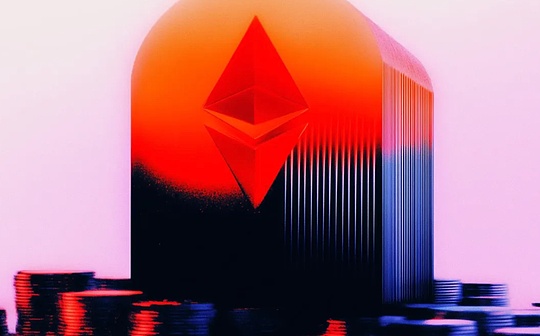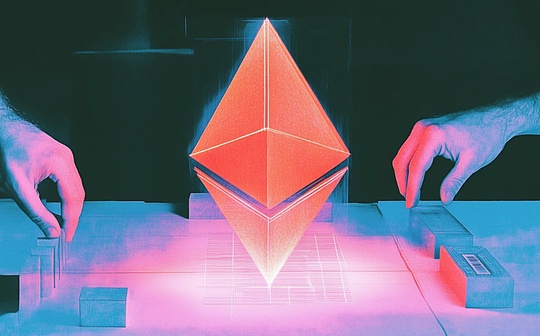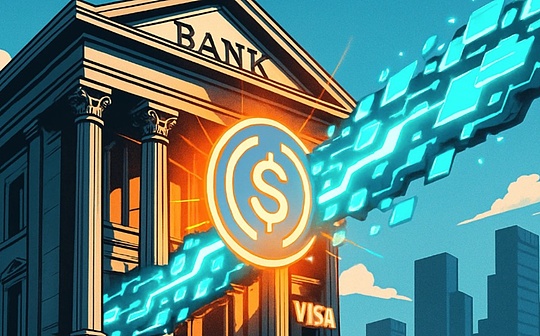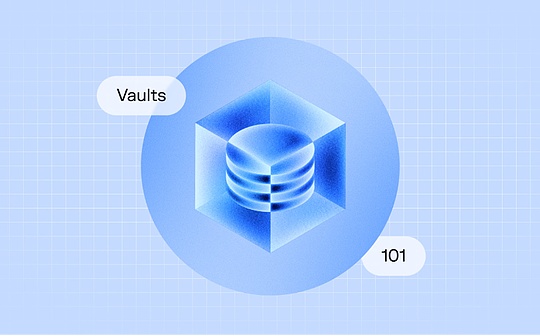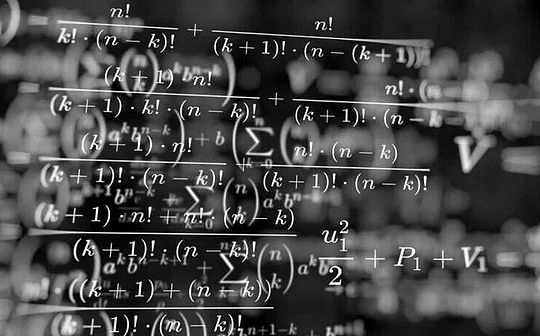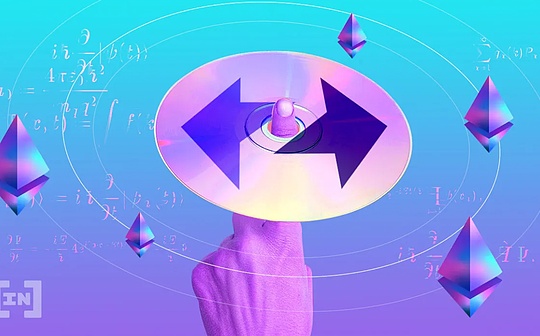
Author: krane, lamby (Asula), sylve, lancelot (Hyle) Source: bedlam research Translation: Shan Oppa, Bitchain Vision
introduce
Over the past week, we have seen several proposals on the Ethereum consensus layer roadmap.Most notably, Justin Drake elaborated on his vision for the Ethereum ZK era in his Devcon 2024 speech.It is called a beam chain or beam fork, which has implemented many major upgrades to Ethereum batches, including shortening slot time, speeding up final certainty, and the “snarkification” of Ethereum consensus.People responded to the ambitions of the proposal and the timeline of these changes.However, given the size of Ethereum’s economy, we should also admit how important it is to be cautious about Ethereum.Despite admitting this, it is useful to consider what the greatest ambitious future of the foundational layer of a rollup-centric ecosystem is like.In line with theDon’t be burdened by the past, just for the future”, this article introduces a future that utilizes ZK and consensus research progress.
We will first study the basic layer from the perspective of basic principles, and then explore the core concepts in consensus research.Finally, we will explore in-depth how this study can be applied to the next generation of basic layer design, especially under the ZK mechanism.
Basic layer
Today, most Rollups use a centralized sorter to sort and execute transactions.After the sorter generates the block, it is also responsible for generating the execution proof for verification by others.To make execution verifiable, third parties need the status data of the Rollup as well as the proof of execution.Status data and proofs are usually published toData Availability (DA) layer, state transitions fromVerification layer(usually mistakenly referred to as the settlement layer) Verification.
In the early days, Ethereum developed a rollup-centric roadmap and became the initial foundation layer, while performing DA and verification.The unique state of Ethereum (i.e., the large number of valuable assets issued on Ethereum) makes it a natural verification or settlement layer for rollups.By using Ethereum as the basis, rollup can inherit not only its security, but also its liquidity.In any case, there were no special settlement or DA options on the market at the time.
Even in today’s world with many dedicated layers, Ethereum, which has the largest PoS validator set and blob support, is a very safe choice as the DA layer.In addition, the number and market value of asset families on Ethereum have been growing continuously.Since “settlement” is asset-specific, rollups that allow for forced exits must be verified on the chain where the assets are issued.If rollup wants to allow forced exit from an Ethereum-issued asset, it must be verified using Ethereum.
Today’s Ethereum looks like this:
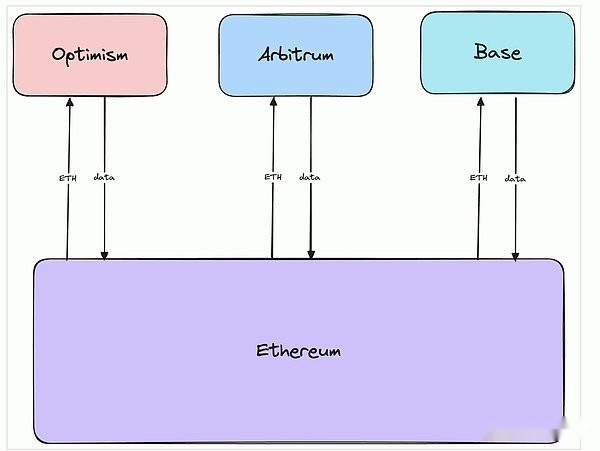
However, the dedicated DA layer and settlement layer are also indeed competing directly with Ethereum to perform these operations.For example, Celestia and EigenDA have already provided significantly higher DA throughput (although the security model is different).Similarly, Initia is expanding the concept of verification or settlement centers to provide users within the ecosystem with a more seamless experience by providing oracles, unified wallet experience and built-in interoperability (which has also become the Ethereum route in the past few months.an important point on the diagram).
All of these systems take the same form as Ethereum, with the underlying layer broken down into data availability and verification, each layer serving as a dedicated hub for its respective operations:
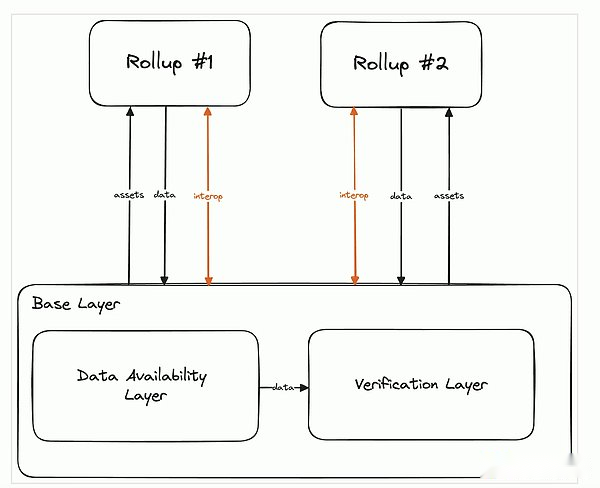
The key insights to the new design are the optimization separation that must be performed by the DA layer and the verification layer.The initial role of blockchain is to achieve decentralization of trusted third parties between two mutually distrustful counterparties.In a rollup-centered system, the role of the base layer is to act as a trusted third party to decentralize between rollups to achieve interoperability between them.Once the base layer verifies the state of the rollup, all other rollups can implicitly trust the base layer.Another core property of rollup-centric design is that it allows applications to provide users with fast and cheap transaction confirmation access on average (via somehow centralized sorter) without the mostBad situations (by forced exit from the base layer) damage ultimate censorship resistance.
Given that we understand the separation between data availability and verification, and the core functions of the base layer in providing final censorship resistance, interoperability between Rollups, and asset issuance, we can infer how to build a better base layer.Currently, Rollup publishes state data to the base layer every few hours, meaning that pre-confirmation provided by the Rollup sorter is only done on a basis within this time frame.The basic layer with higher data throughput than Ethereum L1 allows Rollup to publish data more frequently, reducing the time from Rollup pre-confirmation to base layer confirmation, thereby improving Rollup’s security.Likewise, verification at higher speeds enables faster interoperability between Rollups, eliminating the need for liquidity bridges and market makers.We can leverage specific insights into the shape of workloads that the base layer must handle to build a base layer with higher throughput and faster inter-rollup communication.
Integrated blockchains have “hot state” areas, such as DEX pools that are frequently attacked.This makes it very important to have the relative sort of transactions for all participants.On the other hand, rollups usually run on largely independent state spaces, and most transactions only affect the state within their own rollups.While cross-rollup interactions do occur (for example, when users transfer assets between rollups or rollups combine with each other), these interactions are clear, well-defined, and known in advance.Since the vast majority of transactions in each rollup run in a disconnected state, and cross-rollup transactions are processed through specific interoperability mechanisms, it is necessary to strictly fully sort all rollup data at the base layerSmaller.Instead, sorting can be performed selectively only if rollup explicitly interacts:
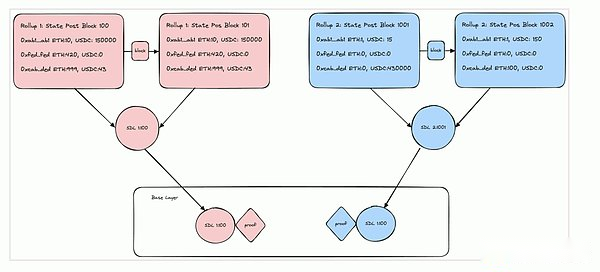
Two Rollups publish a list of state differences and a ZK proof of their state transitions to the base layer
Notice: Let’s assume Rollup publishes a list of state differences here and its ZK proof of its Rollup state transition.
The core insights here revolve around the causal relationship between transactions and underpin the vast amount of work done around the Directed Acyclic Graph (DAG) consensus model.Generally speaking, the DAG algorithm attempts to explicitly point out the dependencies so that the calculation/processing can be performed in parallel.Drawing on these ideas, we expect the rollup base layer to emerge, where consensus is largely relaxed to support higher throughput and lower latency.
The natural division of Rollup states suggests that forcing all Rollup transactions to follow the total order can be an unnecessary overhead.Systems such as delta and Hylé use this insight, allowing Rollup to be done independently, requiring only the coordination of cross-domain asset transfers.However, this is not a complete elimination of consensus; rather, it is an improvement to where consensus is really needed.The innovation is the recognition that this sorting can be limited to where it is actually needed, rather than enforced globally in all transactions.
The biggest impact of this partition is to create an elegant Rollup solution to increase the throughput of a dedicated execution environment without sacrificing composability with other Rollups.
Causal sorting and full sorting
Before we further discuss, let’s review the sorting.Broadly speaking, consensus is the consensus of all nodes in the network on the ordering of valid transactions:
-
The linear blockchain must agree on the full order of transactions, that is, the complete linear order of events occurring in the eyes of all participating nodes.Transactions that are not related to each other are still neatly placed in the global order.
-
On the other hand, causal sorting is just sorting transactions, that is, transactions that occur first are ranked before transactions that depend on their output.Transactions without causality do not need to be sorted together.This is also called partial order.DAG is just a partially ordered data structure in a set of transactions.Partial order also opens the door to parallel transaction execution between disjoint parts in DAG.Here, there is no single, global transaction sorting that all nodes agree on.
The full sequence can be built on the DAG.It requires additional consensus mechanisms to agree on the order of concurrent events.An example is the newer evolution in Narwhal And Tusk protocol or Sui’s Mysticeti.
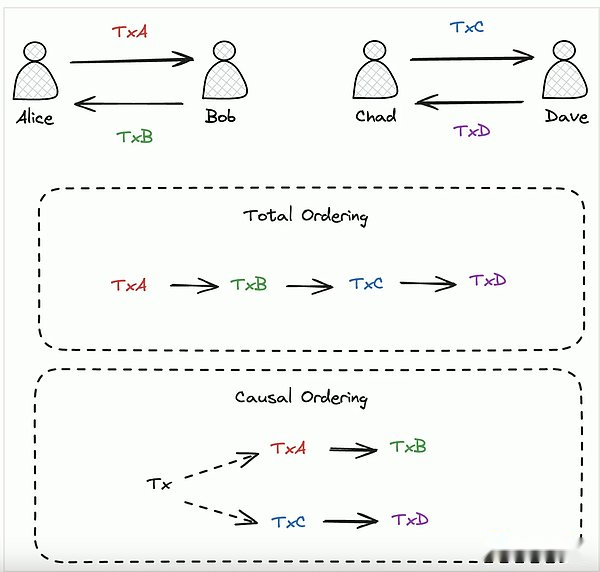
Transactions within DAG can be confirmed independently of other unrelated transactions.Once a transaction is recognized by most validators, it is considered valid.Allowing transaction confirmation alone rather than within a block can greatly improve transaction throughput, as many transactions can be presented and confirmed in parallel.This can be considered a generalization of a single leader consensus, where any validator can propose a new deal (Notice: This can also be considered as proposing a block containing a separate transaction).
To summarize the working principle of transaction verification in DAG:
-
The user broadcasts the transaction to a subset of the validator node.
-
When a node receives a transaction, it first checks whether the transaction conflicts with any transaction it currently knows based on the local view of the graph.
-
If there is a conflict, such as trying to spend the same amount of money, the transaction will be rejected.
-
If there is no conflict, the receiving node will interact with other nodes in the network to reach some form of agreement on the validity of the transaction.One of these methods is subsampling, where nodes start several rounds of queries by sampling a subset of other nodes and asking them if they think the transaction is valid based on their local point of view.If the threshold of the sampling node is a positive response, the query round is considered successful and indicates that the quorum has been reached.Repeat this sampling process until the node is confident in the transaction validity.This process allows nodes to quickly reach a probability consensus on transaction validity without global consistency.Repeated sampling helps ensure consensus across the network, making conflicting transactions extremely unlikely to be accepted simultaneously.
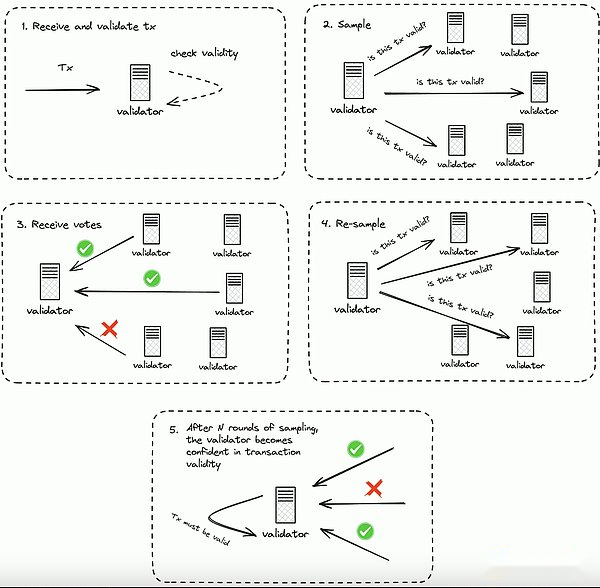
Subsampling transaction verification
It should be reiterated that any node can run this interactive process at any given time to achieve a quorum, allowing for multiple paths to reach consensus.In a sense, each validator or replica is running its own blockchain and is regularly synchronized with other nodes.This idea of advancing multiple different blockchains before coordination is also explored in non-DAG designs, such as Autobahn (still rely on separation of data propagation and sorting).In Autobahn, each validator maintains its own transaction channel and then coordinates during the synchronization process.Although they are not explicitly referred to as blockchains in this article, we believe that channels are very close to blockchains, and the synchronization process is similar to merging multiple blockchains.
Causal relationship in the basic layer
Now, now that we understand the concept of causality, we can try to piece together the relationship between this concept and the underlying layer.As mentioned earlier, rollups typically publish status data or status differences lists that correspond to state updates on their own persistent partition states.The data published by two rollups does not compete for some “hot states” because the data do not intersect with each other at all.This relaxes the need for global sorting in the base layer.Additionally, to verify the new rollup state, just verify the previously published rollup state.Therefore, the base layer is free to sort these rollup transactions so that they can be performed independently of each other without having to wait for global sorting:
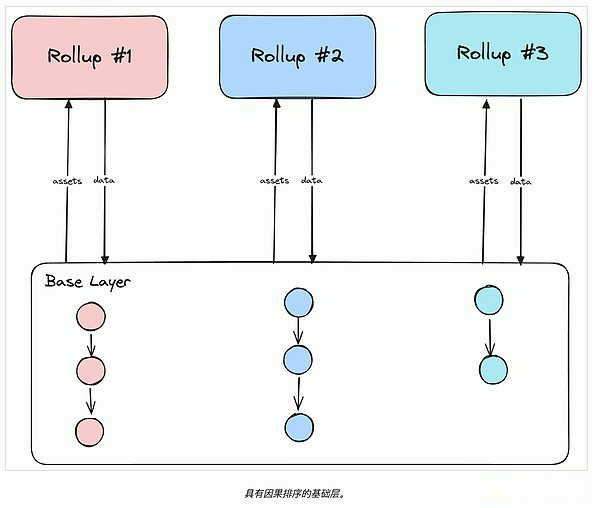
More broadly, rollup should be able to freely publish data and proofs to the underlying layer without worrying about expenses.When data propagates across the network, the verifier at the base layer will verify the proof published by the rollup sorter.If a certain number of validators verified the proof, the transaction is assumed to be confirmed.Such a system will allow rollup to achieve confirmation at the speed at which data propagates through the base layer.In theory, this should also shorten the time between the sorter pre-confirmation and the base layer acknowledgement.
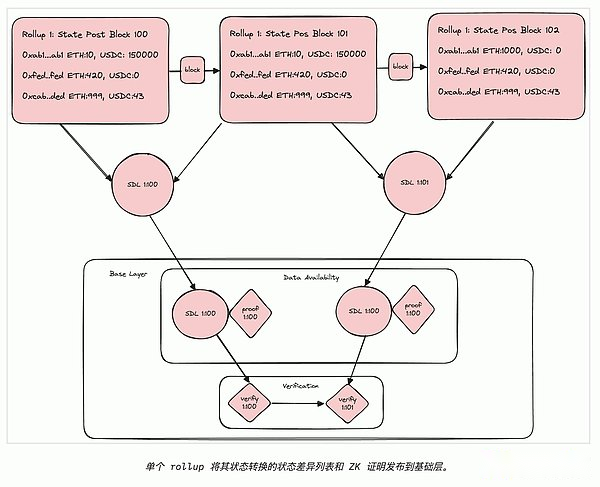
The above systems depend on the ZK-based execution sharding, rather than copy execution as a future for verifiable applications.
Cross-shash transactions that move data between two rollups need to be sorted, but this is also partial.For example, transferring asset X from rollup A to rollup B requires rollup A to quorum for withdrawal transactions, and rollup B can only include deposit transactions.Quick confirmation from the base layer will provide reliable assurance of interoperability between rollups in the same ecosystem, creating network effects for the base layer.Fast interoperability combined with a large number of valuable assets may be enough to make the underlying layer attractive to potential rollups.All in all, this specialized design will allow:
-
Rollup transaction confirmation time is fast.
-
Fast interoperability between Rollups (no liquidity bridges or market makers required).
-
Dedicated DA throughput for Rollup.
-
A dedicated verification tool for Rollup (more proof system).
Brief description: The accumulation of value of underlying assets
The above discussion provides a cheap, fast and secure foundation layer for rollup.However, most of the discussion currently surrounding the rollup-centered roadmap is centered around the accumulation of value in ETH and Ethereum in the presence of rollup.L2 with user relationships, such as Base, can charge a premium on its block space and return a small portion of its revenue to Ethereum in the form of DA fees.
By allowing rollup to publish state data more frequently to achieve rapid interoperability, the base layer can obtain some revenue that would have lost to market makers and liquidity bridges.Although the value brought by better interoperability systems to the base layer is entirely dependent on the number of rollups that need to communicate with each other.In settings where rollup does not meet multiple application needs, the value accumulation of the underlying layer becomes clearer.Applications can achieve composability by simply interacting with the base layer.Applications can gain high throughput and control over their own space without sacrificing composability.
There are also some arguments that the value accumulation of native tokens is improved by improving the execution of the base layer.This actually allows the base layer to compete with rollup, violating the rollup-centric design principle.Another way to include execution (and probably our preferred method) is to build an enshrined rollup where the underlying layer assets protect the rollup sorter by restaking.The base layer validator set can even serve as a sorter set for rollups if needed (although the validator set does not have to be the same).In fact, the topic of enshrined or native rollup started to heat up after Martin Köppelmann’s speech at Devcon 2024.For an ecosystem like Ethereum, it will allow ETH to earn some lost value back, while also allowing developers to experiment more freely on rollups, as rollups may be much lower than Ethereum Layer-1.
in conclusion
Overall, we believe that the ZK era represents a truly exciting and forward-looking future for Ethereum and blockchain as a whole.In this article, we outline how the combination of ZK with state-of-the-art consensus represents a potential new direction for the underlying layer in a rollup-centric system.By combining zero-knowledge proof with the idea of borrowing from a DAG-based consensus mechanism, we can reimagine the underlying layer that is truly optimized for rollup.Consensus applies only to places where the actual shared state is, and not as a unified requirement for all operations.As the ecosystem continues to move towards modular design, we expect this more nuanced fundamental layer consensus approach to become the standard for modular blockchains.
Overall, we believe that given that several new support technologies have just entered production, the base layer must adopt this technology to remain competitive.
We cannot be afraid of having bigger dreams.

